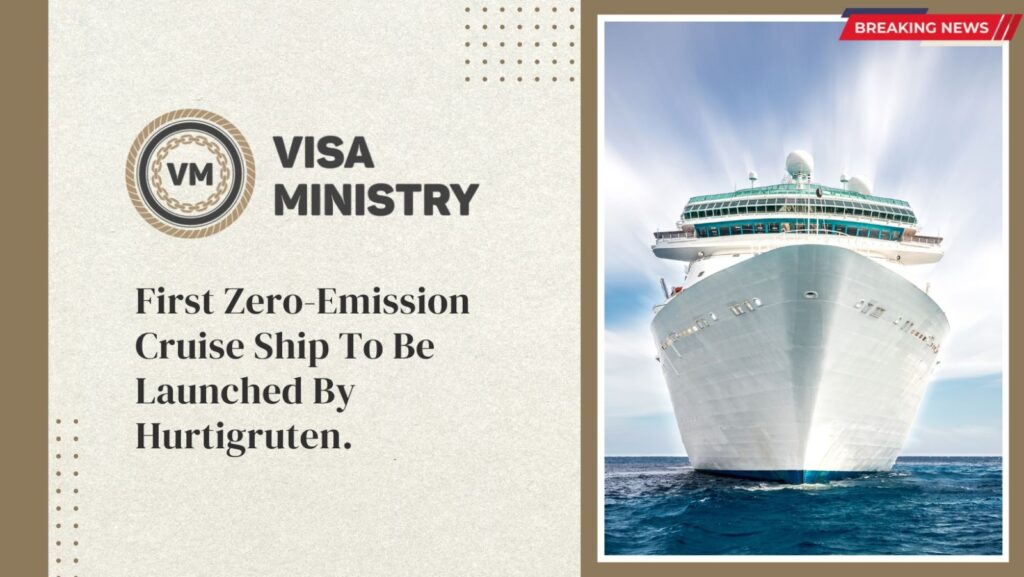In 2030 Hurtigruten Norway plans to debut its first zero-emission cruise ship in 2030, with the goal of eventually making the entire fleet emission-free.
The new Sea Zero ship, which will carry 500 passengers, will be electric and run on 60 megawatt batteries that are refilled with renewable energy while the ship is docked. The 135-meter-long yacht will also have 164-foot retractable sails with solar panels, numerous retractable thrusters, contra-rotating propellers, and a manoeuvring system powered by artificial intelligence.
The new AI manoeuvring system will enable Hurtigruten Norway to significantly reduce the size of the ship’s navigation bridge. Insights gained from the data it generates will also help to improve docking practises. In the meanwhile, the ship’s streamlined form will increase passenger comfort by lowering air resistance and energy use.
Onboard, there will be 270 public staterooms with big windows and lots of outdoor area. Using an interactive smartphone app, passengers can regulate the ventilation in their cabins and monitor their energy and water usage while on the ship.
When we first launched the Sea Zero initiative more than a year ago, we faced the issue of not knowing which technologies will be accessible to us in 2030, said Hedda Felin, CEO of Hurtigruten Norway. Our goal was to improve existing technologies while paving the way for new ones that would further our environmental objectives. Even though some of these technologies are quite advanced, they need careful research and development in order to be used in a maritime environment.
“However, some technologies are still in their infancy and need thorough testing and fundamental research.” We determined the most promising technology for our cutting-edge future cruise ships after conducting a detailed feasibility analysis. We plan to offer a ship that is superior to all others in terms of energy efficiency and sustainability within a few years.
Additionally, Hurtigruten Norway is beginning “one of the most extensive environmental upgrades in European maritime history,” according to the firm. Two of its current vessels have been converted to battery hybrid power, and a third will receive an upgrade this autumn. In order to cut carbon dioxide emissions by 25% and nitrogen oxide emissions by 80%, it is also equipping five boats with varied technology.
Source- Travel daily
